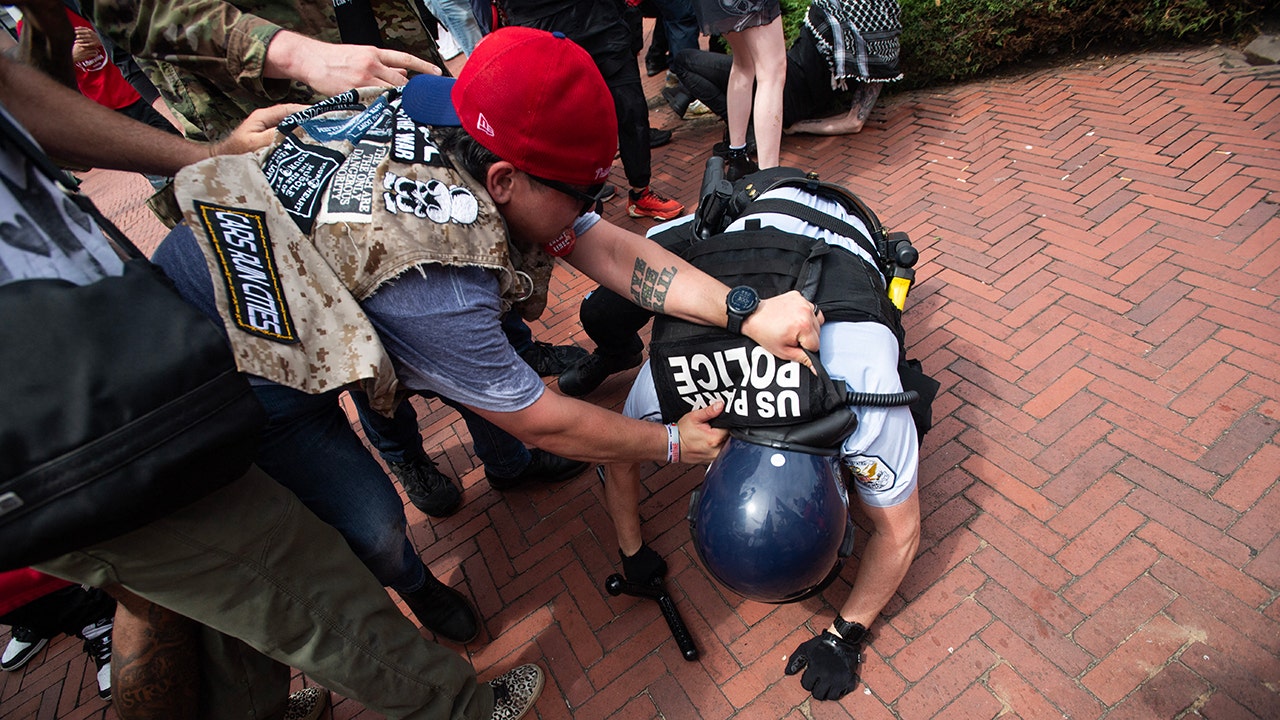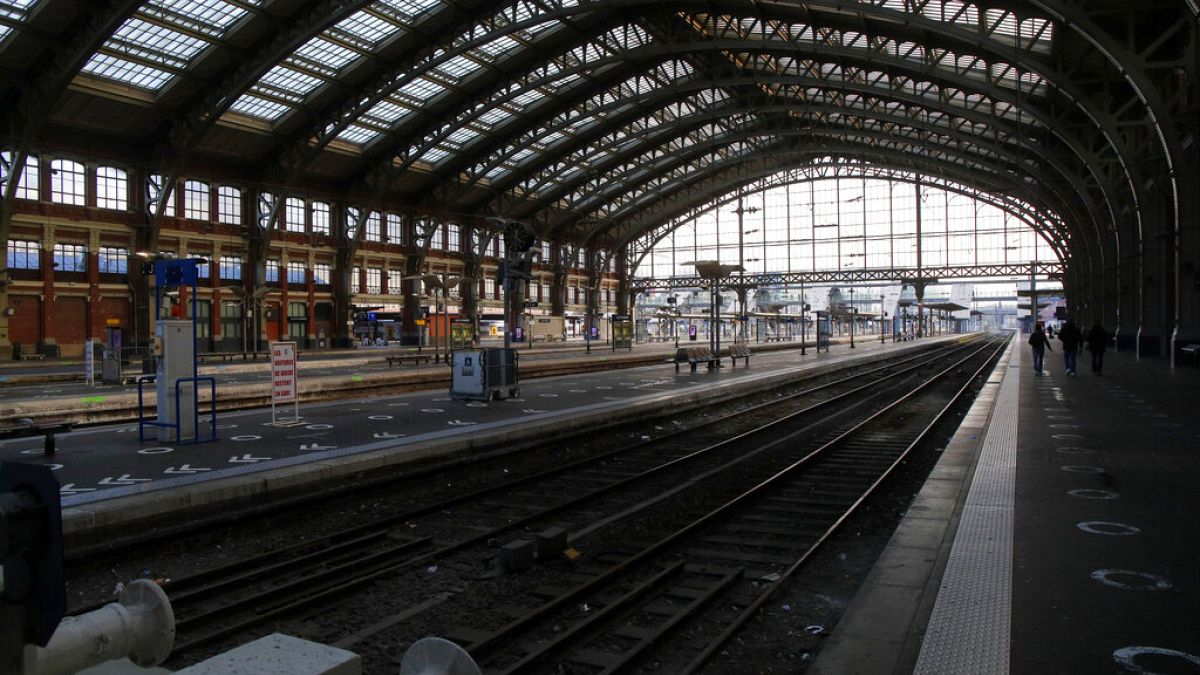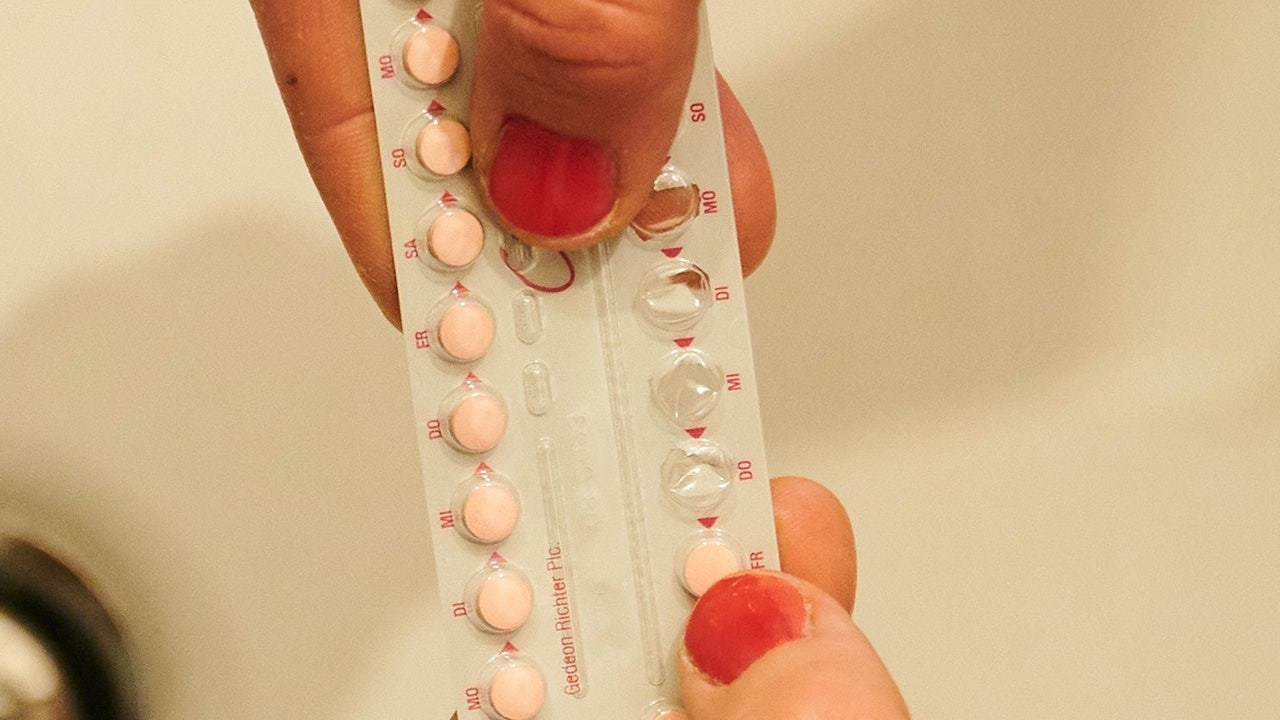Business
Column: They say San Francisco is coming back as a tech hub, but it never really left
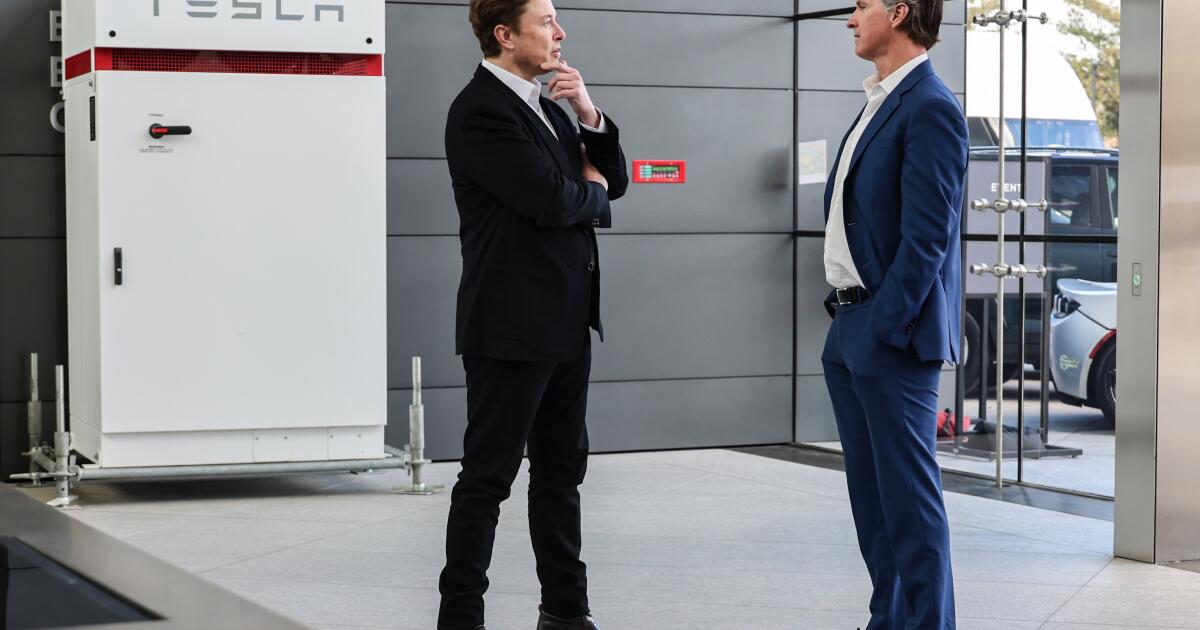
Michael Suswal’s first eye-opening encounter with the vibrancy of San Francisco came in 2017.
That’s when he and his fellow co-founders of Standard AI, an artificial intelligence startup funded by the incubator Y Combinator, moved from New York to San Francisco for the summer.
“Initially we planned on going back to New York,” says Suswal, 44. “But after living in the Bay Area for two or three months, between us we had way more network contacts than we had had in our combined 50 years living in New York.”
Where else would you go that would have more support, more connections, the right type of environment and the right investors?
— Michael Suswal, Generation Lab
When COVID hit, Suswal told me, he moved to Seattle and worked from home. Last year, when he and a partner opted to co-found a new company, they pondered the best place to start.
“We thought, where else would you go that would have more support, more connections, the right type of environment and the right investors? Building a company is hard. It takes everything you’ve got, and even then there’s an 80% chance of failure. So why would you stack the deck against yourself? It was a no-brainer to come back here.”
Generation Lab, which Suswal co-founded with longevity expert Alina Su and UC Berkeley bioengineering professor Irina Conboy, aims to market a technology that can help customers identify and manage long-term medical conditions.
Suswal’s take is different from what you might have heard from the news media and red-state politicians over the last few years. They spin a narrative of a region — indeed, the entire state of California — in secular decline. Of a Silicon Valley whose best days are behind it. Of wholesale flight of money and talent to new, welcoming places such as Miami and Austin.
But there has never been much truth to that narrative generally, and it’s more dubious than ever today, when the Bay Area has emerged as a center of artificial intelligence investing.
There is no shortage of newsy nuggets to illustrate the “doom loop” narrative about San Francisco.
On Tuesday, for instance, Macy’s announced that it would close its gigantic store overlooking Union Square sometime in the next three years. But the closure is part of a major corporate retrenchment involving the closings of 150 stores nationwide, 30% of the total.
Nor is there anything historically new about San Francisco-bashing. The practice dates back to the Gold Rush, when the city’s powerful attraction as a jumping-off place for Forty-Niners seeking their fortunes in the nearby hills generated an equally potent counter-narrative.
Hinton R. Helper, a visitor from North Carolina who would eventually gain notoriety as a white supremacist, reported in 1855 on the city’s “rottenness and its corruption, its squalor and its misery, its crime and its shame, its gold and its dross…. Degradation, profligacy and vice confront us at every step.”
It’s a short distance from Helper’s screed to the map that Florida Gov. Ron DeSantis displayed during a televised debate with Gov. Gavin Newsom in November, purportedly showing deposits of human waste around San Francisco. (That didn’t help DeSantis’ presidential campaign avert an early demise, any more than Helper’s critique stemmed the flow of fortune-seekers into California.)
It’s true that the frenzy in artificial intelligence investing has brought a jolt of capital to the entrepreneurial economy of the Bay Area, but that’s merely the latest iteration of a story that dates back to the emergence of Silicon Valley in the late 1960s — or even to the founding of Hewlett-Packard in Palo Alto in 1939.
The region has undergone a long sequence of technology booms and busts over the decades, but each bust has set the stage for the next boom. In the 1980s, the valley’s chipmakers lost their dominance in semiconductor memory to Japanese competitors.
But within a few years, as UC Berkeley economist and political scientist AnnaLee Saxenian observed in her definitive study of the region, “Regional Advantage,” in 1994, new semiconductor and computer startups such as Sun Microsystems had emerged and Silicon Valley had “regained its former vitality.” By 1990, Silicon Valley was home to “one-third of the 100 largest technology companies created in the United States since 1965,” Saxenian wrote.
The key to its enduring stature atop the innovation economy has been the Bay Area’s infrastructure of institutions (Stanford and UC Berkeley) and legal, technical and financial professionals, and its population of technology workers — all having created “dense social networks and open labor markets.”
By contrast, the Silicon wannabes tend to put all their eggs in one basket, and when that basket’s contents spill out, there’s little to fill it up again.
Miami is a telling example. Its mayor, Francis X. Suarez, tried to establish the city as the center of cryptocurrency financing and innovation. The FTX crypto exchange bought naming rights to the arena where the NBA’s Miami Heat play. International conferences for bitcoin and crypto adherents filled the conference center in 2022.
Miami associated itself with the first “city coin,” a crypto token that Suarez claimed would help boost the municipal budget.
The effort hasn’t panned out. FTX collapsed as its founder, Sam Bankman-Fried, was indicted and subsequently convicted of fraud; the Heat’s arena now carries the name of Kaseya, a Miami software firm.
Attendance at crypto conferences has dwindled. MiamiCoin, which was valued at 5 cents when it came on the market in August 2021, now trades for about 16-thousandths of a cent, if anyone cares — there doesn’t seem to have been a trade in eight months. The city is searching for relevance in the modern technology landscape.
The same sources that talked up the flight of entrepreneurs from the Bay Area to Miami, Austin and other Silicon wannabes are now running articles about startup founders moving back; often the return is accompanied by complaints about the lack of a true innovation culture in their new homes, as well as traffic congestion and housing prices soaring out of reach — much the same as one would find in any large city.
As my colleague Hannah Wiley reported recently, San Francisco’s adherents are trying to seize the narrative reins by reminding people that the city and region offer unique advantages to entrepreneurs, especially in technology-related fields.
One is Angela Hoover, 25, who launched her consumer-oriented AI search firm, Andi, in Miami with backing from Y Combinator. At first, Miami seemed inviting because it seemed to be host to a healthy startup community.
Attending AI events in San Francisco, however, made it “abundantly clear that the AI community was in San Francisco. It almost feels like you have a front-row seat to a play, and at the same time you’re in the play,” Hoover said.
“Despite what all the doom-and-gloom critics say, [the Bay Area] is still a hotbed of innovation,” Ali Diab, chief executive of Collective Health, told me. That’s what prompted the firm, which manages employer health plans, to return its headquarters to downtown San Francisco after allowing its workforce to disperse to a work-from-home system during the pandemic.
“Obviously, you have the AI revolution being driven from here,” Diab says, “but you also have powerhouse enterprise software companies like Salesforce and Slack.”
Collective Health also discovered that the cost of office space in San Francisco was lower than elsewhere in the Bay Area, including Silicon Valley proper. About 120 of Collective Health’s 783 employees work in San Francisco, with the others distributed among offices in Chicago, Texas and Utah, or working remotely.
Diab was an early critic of the “doom loop” argument against San Francisco, observing in a mid-October op-ed in the San Francisco Chronicle that “as a Bay Area native, I’ve had to listen to people predict the demise of my city for my entire life.” In truth, he wrote, “the oft-cited challenges San Francisco faces are no different from those experienced by any other major city in the United States.”
Housing is “prohibitively expensive in almost every major American city,” he added. “New York, Chicago and Los Angeles haven’t solved their homelessness problems and neither have many other large cities.”
The story of a Bay Area exodus always was overstated. The image of Texas’ attraction for entrepreneurs has never moved much beyond three major tech companies that moved their headquarters there from California — Hewlett Packard Enterprise in Houston and Oracle and Tesla in Austin.
And the significance of these moves may be more imagined than real. In 2020, when Oracle announced its move to Austin from Redwood City, south of San Francisco, it said it was building a campus for 10,000 employees; the company has 164,000 workers worldwide.
When Elon Musk sought a location for Tesla’s “global engineering headquarters,” the seat of the company’s innovative brainpower, he found it in Hewlett Packard’s former corporate headquarters — not in Austin, but Palo Alto. He announced his decision to move into that space in February 2023 at a joint event with Gov. Newsom.
Other states have never come close to California in the volume of their venture investments. In 2022, according to the National Venture Capital Assn., California firms raised $78.3 billion in venture funding, more than 40% higher than second-ranked New York. Florida ranked fifth with only $2.6 billion, followed by Texas with $2.4 billion (and Texas’ total fell by about half from the previous year).
San Francisco companies attracted nearly $31 billion in venture funding in 2022, according to CBRE. The Bay Area all told attracted $61 billion, accounting for 35% of all venture funding in the U.S.
Venture investing fell appreciably in 2023, and venture-backed companies experienced a spike in “down rounds” — in which their valuations are lower than they were in the previous round of venture infusions — starting in late 2022. But those trends appeared across the entire venture funding universe, and were more likely related to the run-up in interest rates and fears of a recession than to any California-centric phenomena.
In any case, AI was a distinct bright spot, accounting for about 1 in 5 of all venture deals in 2023 and one-third of all venture dollars invested, according to the accounting firm EisnerAmper.
No one doubts that San Francisco and the Bay Area present challenges. Suswal says he was concerned that recruiting staffers to come to the area would be difficult. When he himself was considering moving back to San Francisco from Seattle last October, he “bought into a lot of the negative aspects of the city that were being published at the time,” he says. “But the city is in better shape than it gets credit for. … All the best people come here, because it’s well worth it.”

Business
After 57 years of open seating, is Southwest changing its brand?

Jim Kingsley of Orange County, who recently flew Southwest on a two-leg journey from Minneapolis to Los Angeles, likened the budget-friendly airline to In-N-Out Burger.
Both brands are affordable, consistent and more simplistic compared with competitors, Kingsley said.
“They’re not trying to offer all the things everybody else offers,” he said, “but they get the quality right and it’s a good value.”
Change, however, is in the air.
Southwest, which since its founding nearly 60 years ago has positioned itself in the cutthroat airline industry as an easygoing, egalitarian option, upended that guiding ethos this week with word that it would get rid of its famous first-come, first-seated policy in favor of traditional assigned seats and a premium class option. They will also offer overnight, red-eye flights in five markets including Los Angeles.
Experts say the changes, especially the switch to assigned seating, are a smart move and will appeal to many as the company tries to stabilize its precarious finances that included a 46% drop in profits in the second quarter from a year earlier to $367 million. But it remains to be seen whether Southwest will pay an intangible cost in making the moves: Will it be able to hold on to its quirky identity or will it put off loyal customers, and in doing so, become just another airline?
“You’re going to hear nostalgia about this, but I think it’s very logical and probably something the company should have done years ago,” said Duane Pfennigwerth, a global airlines analyst at Evercore.
“In many markets away from core Southwest markets, we think open seating is a boarding process that many people avoid,” he said.
That is all well and good, but “I didn’t ask for these changes,” Kingsley said. “Cost and quality is what I care about.”
Open seating has its pros and cons, Kingsley said, though he’s generally a fan. On his trip to Los Angeles, his group wasn’t able to get seats all together. But he likes that preferred seats are available on a first-come, first-served basis, instead of being offered for a high price.
Eighty percent of Southwest customers and 86% of potential customers prefer an assigned seat, the airline said in a statement.
“By moving to an assigned seating model, Southwest expects to broaden its appeal and attract more flying from its current and future customers,” the airline said.
An even bigger draw of Southwest, according to Kingsley, is its policy of including two free checked bags per ticket. This perk often makes Southwest a better bargain, especially for longer trips or bigger groups, he said.
The free bags are a big deal to customers, experts said, and contribute to the airline’s consumer-friendly brand. The airline hasn’t indicated they plan to change their bag policy.
“Southwest has always had a really good, positive vibe,” said Alan Fyall, chair of Tourism Marketing at the University of Central Florida’s College of Hospitality. “It’s free bags, good prices and point-to-point routes. That’s what they stand for and that’s what people love about them.”
Southwest’s change to assigned seating doesn’t mean they’re no longer a budget-friendly airline, Fyall said, but it does differentiate them from the lowest-cost, lowest-amenity options such as Frontier and Spirit.
The move will also require Southwest to update all or a portion of its fleet to include first-class seats. Currently, all seats on a Southwest flight are identical. Fyall said it’s worth the investment.
It’s an appropriate time for Southwest to make adjustments, said Chris Hydock, an assistant professor at Tulane University’s Freeman School of Business.
“They’ve not been profitable the last couple of quarters and they’ve had some activist investor pressure to increase their revenue,” he said.
Costs such as wages and maintenance have risen across the airline industry even as travel increased after the pandemic. Southwest saw a net loss of $231 million in the first quarter of 2024. Wall Street analysts estimate that assigned, premium seating could boost revenue by $2 billion per year.
“This is one of the options where they could potentially increase their revenue and do something that a lot of consumers have a strong preference for anyway,” Hydock said.
For Southwest’s changes to pay off, it has to stick to its roots when it comes to its culture and brand, experts and travelers agreed.
“I love Southwest being different,” Kingsley said. “If they’re trying to be like the other airlines, I think they’re shooting themselves in the foot.”
Business
Column: 99 years after the Scopes 'monkey trial,' religious fundamentalism still infects our schools
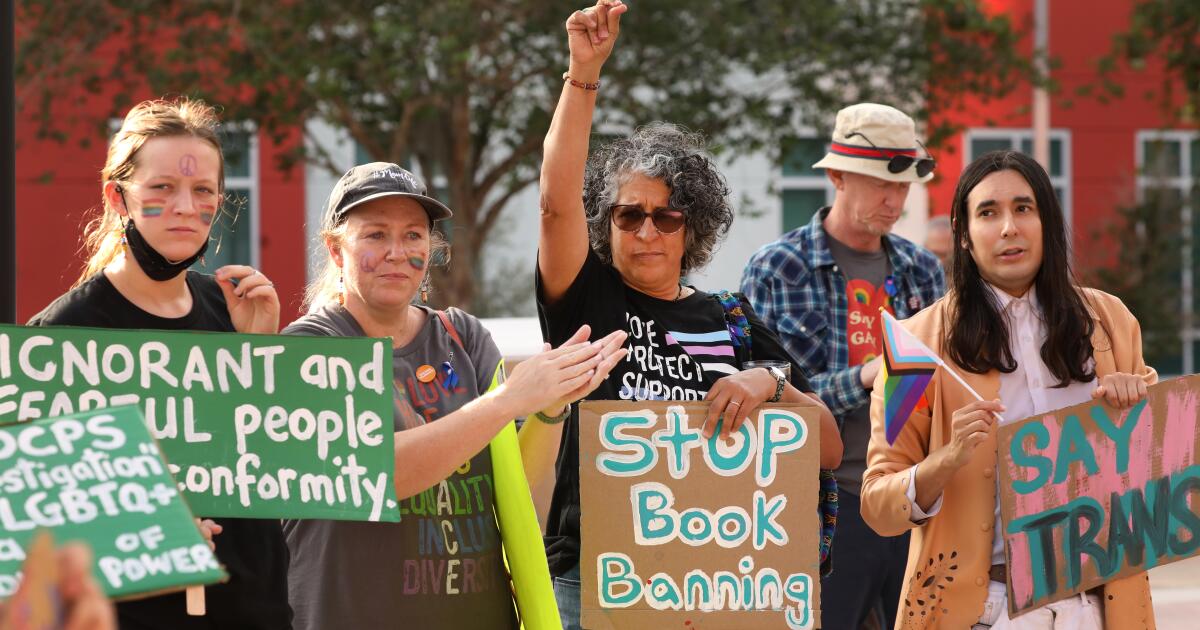
Almost a century has passed since a Tennessee schoolteacher was found guilty of teaching evolution to his students. We’ve come a long way since that happened on July 21, 1925. Haven’t we?
No, not really.
The Christian fundamentalism that begat the state law that John Scopes violated has not gone away. It regularly resurfaces in American politics, including today, when efforts to ban or dilute the teaching of evolution and other scientific concepts are part and parcel of a nationwide book-banning campaign, augmented by an effort to whitewash the teaching of American history.
I knew that education was in danger from the source that has always hampered it—religious fanaticism.
— Clarence Darrow, on why he took on the defense of John Scopes at the ‘monkey trial’
The trial in Dayton, Tenn., that supposedly placed evolution in the dock is seen as a touchstone of the recurrent battle between science and revelation. It is and it isn’t. But the battle is very real.
Let’s take a look.
The Scopes trial was one of the first, if not the very first, to be dubbed “the trial of the century.”
And why not? It pitted the fundamentalist William Jennings Bryan — three-time Democratic presidential candidate, former congressman and secretary of State, once labeled “the great commoner” for his faith in the judgment of ordinary people, but at 65 showing the effects of age — against Clarence Darrow, the most storied defense counsel of his time.
The case has retained its hold on the popular imagination chiefly thanks to “Inherit the Wind,” an inescapably dramatic reconstruction — actually a caricature — of the trial that premiered in 1955, when the play was written as a hooded critique of McCarthyism.
Most people probably know it from the 1960 film version, which starred Frederic March, Spencer Tracy and Gene Kelly as the characters meant to portray Bryan, Darrow and H.L. Mencken, the acerbic Baltimore newspaperman whose coverage of the trial is a genuine landmark of American journalism.
What all this means is that the actual case has become encrusted by myth over the ensuing decades.
One persistent myth is that the anti-evolution law and the trial arose from a focused groundswell of religious fanaticism in Tennessee. In fact, they could be said to have occurred — to repurpose a phrase usually employed to describe how Britain acquired her empire — in “a fit of absence of mind.”
The Legislature passed the measure idly as a meaningless gift to its drafter, John W. Butler, a lay preacher who hadn’t passed any other bill. (The bill “did not amount to a row of pins; let him have it,” a legislator commented, according to Ray Ginger’s definitive 1958 book about the case, “Six Days or Forever?”)
No one bothered to organize an opposition. There was no legislative debate. The lawmakers assumed that Gov. Austin Peay would simply veto the bill. The president of the University of Tennessee disdained it, but kept mum because he didn’t want the issue to complicate a plan for university funding then before the Legislature.
Peay signed the bill, asserting that it was an innocuous law that wouldn’t interfere with anything being taught in the state’s schools. The law “probably … will never be applied,” he said. Bryan, who approved of the law as a symbolic statement of religious principle, had advised legislators to leave out any penalty for violation, lest it be declared unconstitutional.
The lawmakers, however, made it a misdemeanor punishable by a fine for any teacher in the public schools “to teach any theory that denies the story of the Divine Creation of man as taught in the Bible, and to teach instead that man had descended from a lower order of animal.”
Scopes’ arrest and trial proceeded in similarly desultory manner. Scopes, a school football coach and science teacher filling in for an ailing biology teacher, assigned the students to read a textbook that included evolution. He wasn’t a local and didn’t intend to set down roots in Dayton, but his parents were socialists and agnostics, so when a local group sought to bring a test case, he agreed to be the defendant.
The play and movie of “Inherit the Wind” portray the townspeople as religious fanatics, except for a couple of courageous individuals. In fact, they were models of tolerance. Even Mencken, who came to Dayton expecting to find a squalid backwater, instead discovered “a country town full of charm and even beauty.”
Dayton’s civic boosters paid little attention to the profound issues ostensibly at play in the courthouse; they saw the trial as a sort of economic development project, a tool for attracting new residents and businesses to compete with the big city nearby, Chattanooga. They couldn’t have been happier when Bryan signed on as the chief prosecutor and a local group solicited Darrow for the defense.
“I knew that education was in danger from the source that has always hampered it — religious fanaticism,” Darrow wrote in his autobiography. “My only object was to focus the attention of the country on the programme of Mr. Bryan and the other fundamentalists in America.” He wasn’t blind to how the case was being presented in the press: “As a farce instead of a tragedy.” But he judged the press publicity to be priceless.
The press and and the local establishment had diametrically opposed visions of what the trial was about. The former saw it as a fight to protect from rubes the theory of evolution, specifically that humans descended from lower orders of primate, hence the enduring nickname of the “monkey trial.” For the judge and jury, it was about a defendant’s violation of a law written in plain English.
The trial’s elevated position in American culture derives from two sources: Mencken’s coverage for the Baltimore Sun, and “Inherit the Wind.” Notwithstanding his praise for Dayton’s “charm,” Mencken scorned its residents as “yokels,” “morons” and “ignoramuses,” trapped by their “simian imbecility” into swallowing Bryan’s “theologic bilge.”
The play and movie turned a couple of courtroom exchanges into moments of high drama, notably Darrow’s calling Bryan to the witness stand to testify to the truth of the Bible, and Bryan’s humiliation at his hands.
In truth, that exchange was a late-innings sideshow of no significance to the case. Scopes was plainly guilty of violating the law and his conviction preordained. But it was overturned on a technicality (the judge had fined him $100, more than was authorized by state law), leaving nothing for the pro-evolution camp to bring to an appellate court. The whole thing fizzled away.
The idea that despite Scopes’ conviction, the trial was a defeat for fundamentalism, lived on. Scopes was one of its adherents. “I believe that the Dayton trial marked the beginning of the decline of fundamentalism,” he said in a 1965 interview. “I feel that restrictive legislation on academic freedom is forever a thing of the past, … that the Dayton trial had some part in bringing to birth this new era.”
That was untrue then, or now. When the late biologist and science historian Stephen Jay Gould quoted that interview in a 1981 essay, fundamentalist politics were again on the rise. Gould observed that Jerry Falwell had taken up the mountebank’s mission of William Jennings Bryan.
It was harder then to exclude evolution from the class curriculum entirely, Gould wrote, but its enemies had turned to demanding “‘equal time’ for evolution and for old-time religion masquerading under the self-contradictory title of ‘scientific creationism.’”
For the evangelical right, Gould noted, “creationism is a mere stalking horse … in a political program that would ban abortion, erase the political and social gains of women … and reinstitute all the jingoism and distrust of learning that prepares a nation for demagoguery.”
And here we are again. Measures banning the teaching of evolution outright have not lately been passed or introduced at the state level. But those that advocate teaching the “strengths and weaknesses” of scientific hypotheses are common — language that seems innocuous, but that educators know opens the door to undermining pupils’ understanding of science.
In some red states, legislators have tried to bootstrap regulations aimed at narrowing scientific teaching onto laws suppressing discussions of race and gender in the classrooms and stripping books touching those topics from school libraries and public libraries.
The most ringing rejection of creationism as a public school topic was sounded in 2005 by a federal judge in Pennsylvania, who ruled that “intelligent design” — creationism by another name — “cannot uncouple itself from its creationist, and thus religious, antecedents” and therefore is unconstitutional as a topic in public schools. Yet only last year, a bill to allow “intelligent design” to be taught in the state’s public schools was overwhelmingly passed by the state Senate. (It died in a House committee.)
Oklahoma’s reactionary state superintendent of education, Ryan Walters, recently mandated that the Bible should be taught in all K-12 schools, and that a physical copy be present in every classroom, along with the Ten Commandments, the Declaration of Independence and the Constitution. “These documents are mandatory for the holistic education of students in Oklahoma,” he ordered.
It’s clear that these sorts of policies are broadly unpopular across much of the nation: In last year’s state and local elections, ibook-banners and other candidates preaching a distorted vision of “parents’ rights” to undermine educational standards were soundly defeated.
That doesn’t seem to matter to the culture warriors who have expanded their attacks on race and gender teaching to science itself. They’re playing a long game. They conceal their intentions with vague language in laws that force teachers to question whether something they say in class will bring prosecutors to the schoolhouse door.
Gould detected the subtext of these campaigns. So did Mencken, who had Bryan’s number. Crushed by his losses in three presidential campaigns in 1896, 1900 and 1908, Mencken wrote, Bryan had launched a new campaign of cheap religiosity.
“This old buzzard,” Mencken wrote, “having failed to raise the mob against its rulers, now prepares to raise it against its teachers.” Bryan understood instinctively that the way to turn American society from a democracy to a theocracy was to start by destroying its schools. His heirs, right up to the present day, know it too.
Business
NASA identifies Starliner problems but sets no date for astronauts' return to Earth
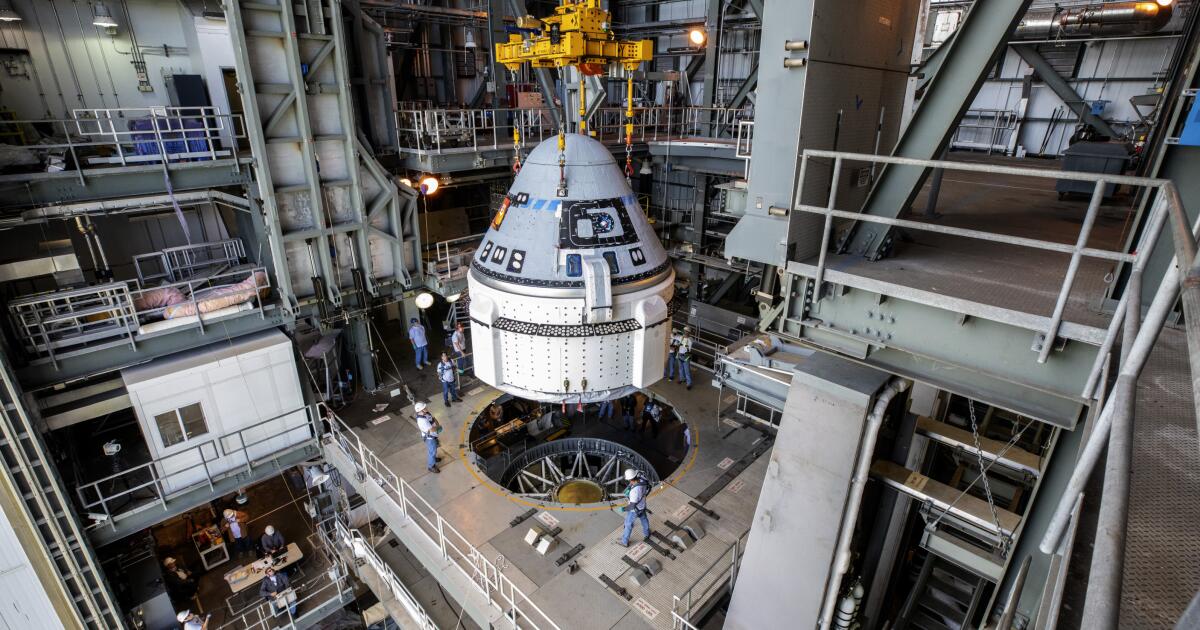
After weeks of testing, NASA and Boeing officials said Thursday they have identified problems with the Starliner’s propulsion system that have kept two astronauts at the International Space Station for seven weeks — but they didn’t set a date to return them to Earth.
Ground testing conducted on thrusters that maneuver Boeing’s capsule in space found that Teflon used to control the flow of rocket propellant eroded under high heat conditions, while different seals that control helium gas showed bulging, they said.
The testing was conducted after the thrusters malfunctioned when Starliner docked with the space station on June 6 and a helium leak that was detected before launch worsened on the trip to the station. The helium pressurizes the propulsion system.
However, officials said the problems should not prevent astronauts Suni Williams and Butch Wilmore from returning to Earth aboard the Starliner capsule, which lifted off on its maiden human test flight June 5 for what was supposed to be an eight-day mission.
“I am very confident we have a good vehicle to bring the crew back with,” Mark Nappi, program manager of Boeing’s Commercial Crew Program, said at a news conference.
NASA and Boeing officials have said previously that the Starliner could transport the astronauts to Earth if there were an emergency aboard the space station, but they opted to conduct the ground tests to ensure a safe, planned return.
Decisions on whether and when to use Starliner or another vehicle will be made by NASA leaders after they are presented next week with all the information collected from the testing, which will include a “hot fire” test of the engines of the Starliner docked at the space station, Nappi said.
Rigorous ground testing conducted at NASA’s White Sands Test Facility on a thruster identical to the ones on the Starliner found that, despite the issues with Teflon degradation, the thruster was able to perform the maneuvers that would be needed to return Starliner to Earth, said Steve Stich, program manager for NASA’s Commercial Crew Program.
Official also have said that the Starliner still has about 10 times more helium than is needed to bring the capsule back to Earth.
The problems that have cropped up have been an embarrassment for Boeing, which along with SpaceX was given a multibillion-dollar contract in 2014 to service the station with crew and cargo flights after the end of the space shuttle program. Since then, Elon Musk’s Hawthorne-based company has sent more than a half-dozen crews up, while Boeing is still in its testing phase — with the current flight delayed for weeks by the helium leak and other issues that arose even before the thrusters malfunctioned.
Should NASA make a decision not to bring the crew home on the Starliner — which could still return to Earth remotely — the astronauts could be retrieved by SpaceX’s Crew Dragon capsule, though SpaceX’s workhorse Falcon 9 rocket is currently grounded after a failure this month.
The Russian Soyuz spacecraft also services the station and carries American astronauts.
-

 World1 week ago
World1 week agoOne dead after car crashes into restaurant in Paris
-
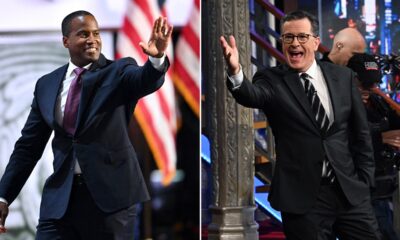
 Midwest1 week ago
Midwest1 week agoMichigan rep posts video response to Stephen Colbert's joke about his RNC speech: 'Touché'
-

 News1 week ago
News1 week agoVideo: Young Republicans on Why Their Party Isn’t Reaching Gen Z (And What They Can Do About It)
-

 Movie Reviews1 week ago
Movie Reviews1 week agoMovie Review: A new generation drives into the storm in rousing ‘Twisters’
-

 News1 week ago
News1 week agoIn Milwaukee, Black Voters Struggle to Find a Home With Either Party
-
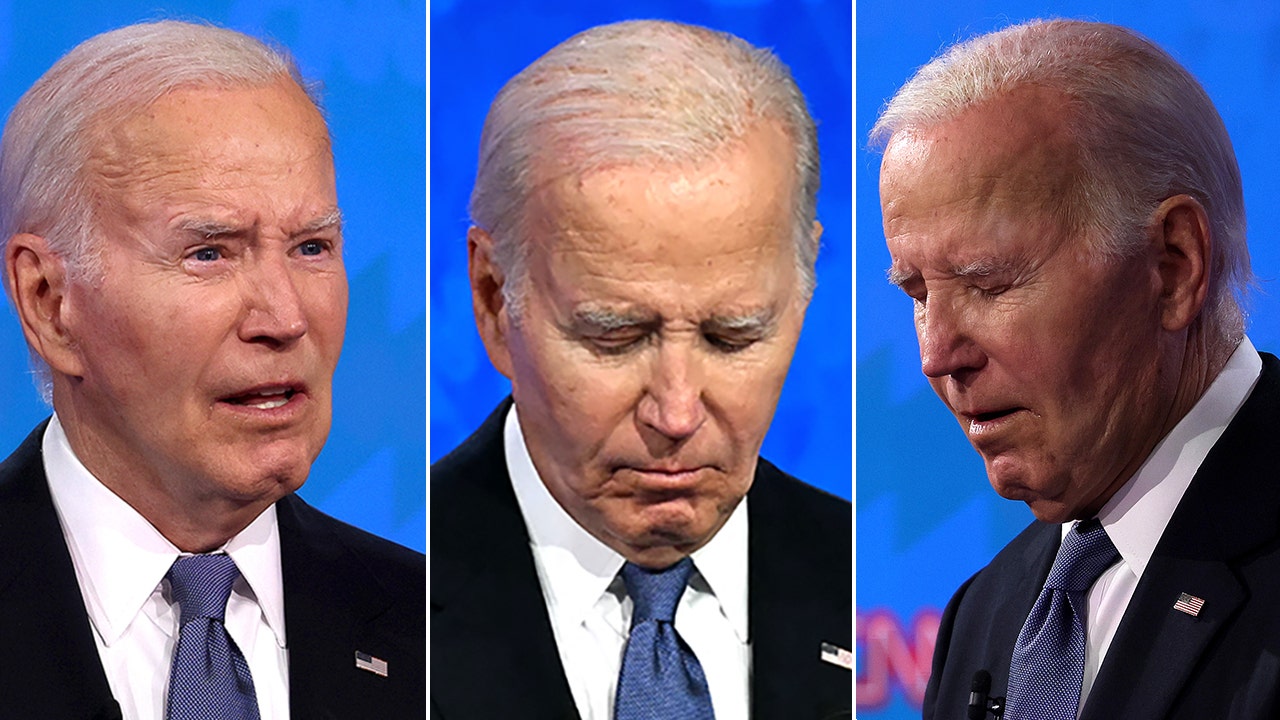
 Politics1 week ago
Politics1 week agoFox News Politics: The Call is Coming from Inside the House
-

 News1 week ago
News1 week agoVideo: J.D. Vance Accepts Vice-Presidential Nomination
-

 World1 week ago
World1 week agoTrump to take RNC stage for first speech since assassination attempt











